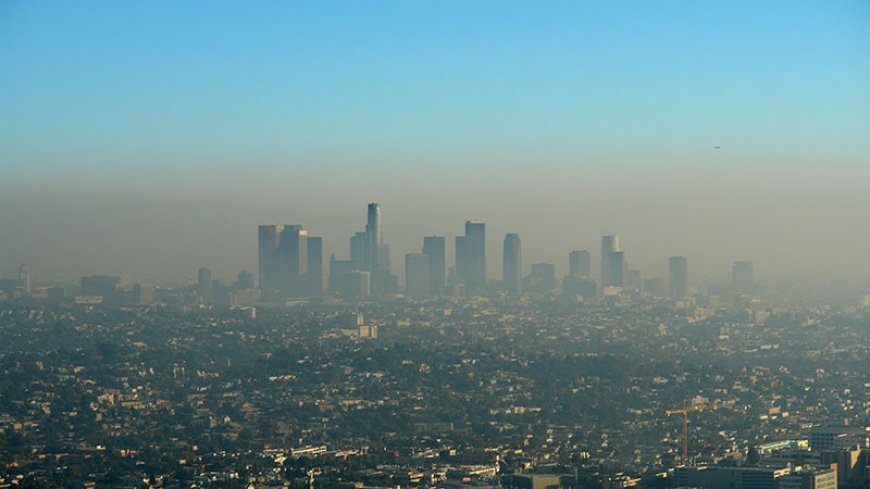Hourly Air Pollution Exposure: A Risk Factor for Stroke
Hourly Air Pollution Exposure: A Risk Factor for Stroke Medscape

Exposure to Air Pollution Linked to Emergency Hospital Admissions for Stroke

TOPLINE:
Exposure to air pollutants is linked to emergency hospital admissions for stroke shortly after the exposure, with the risk being pronounced in men and individuals aged <65 years.
METHODOLOGY:
-
Limited studies have investigated the association between hourly exposure to air pollutants and specific stroke subtypes, especially in regions with moderate to high levels of air pollution.
-
The multicenter case-crossover study evaluated the association between hourly exposure to air pollution and stroke among 86,635 emergency admissions for stroke across 10 hospitals in 3 cities.
-
Of 86,635 admissions, 79,478 were admitted for ischemic stroke, 3122 for hemorrhagic stroke, and 4035 for undetermined type of stroke.
-
Hourly levels of fine particulate matter (PM2.5), respirable PM (PM10), nitrogen dioxide (NO2), and sulfur dioxide (SO2) were collected from the China National Environmental Monitoring Center.
TAKEAWAY:
-
Exposure to NO2 and SO2 increased the risk for emergency admission for stroke shortly after exposure by 3.34% (95% CI, 1.41%-5.31%) and 2.81% (95% CI, 1.15%-4.51%), respectively.
-
Among men, exposure to PM2.5 and PM10 increased the risk for emergency admission for stroke by 3.40% (95% CI, 1.21%-5.64%) and 4.33% (95% CI, 2.18%-6.53%), respectively.
-
Among patients aged <65 years, exposure to PM10 and NO2 increased the risk for emergency admissions for stroke shortly after exposure by 4.88% (95% CI, 2.29%-7.54%) and 5.59% (95% CI, 2.34%-8.93%), respectively.
IN PRACTICE:
“These variations in susceptibility highlight the importance of implementing effective health protection measures to reduce exposure to air pollution and mitigate the risk of stroke in younger and male populations,” wrote the authors.
SOURCE:
The study was led by Xin Lv, MD, Department of Epidemiology and Biostatistics, School of Public Health, Capital Medical University, Beijing, China. It was published online on October 30, 2023 in the journal Stroke .
LIMITATIONS:
-
Using data from the nearest monitoring site to the hospital address may lead to localized variations in pollution concentrations when assessing exposure.
-
There may be a possibility of residual confounding resulting from time-varying lifestyle-related factors.
DISCLOSURES:
This study was supported by the Zhejiang Provincial Project for Medical Research and Health Sciences. No disclosures were reported.
Credit
Lead Image: E+/Getty Images
Medscape Medical News © 2023 WebMD, LLC
Send news tips to news@medscape.net.
Cite this: Hourly Air Pollution Exposure: A Risk Factor for Stroke – Medscape – Nov 17, 2023.
SDGs, Targets, and Indicators Analysis
1. Which SDGs are addressed or connected to the issues highlighted in the article?
- SDG 3: Good Health and Well-being
- SDG 11: Sustainable Cities and Communities
The article discusses the association between exposure to air pollutants and emergency hospital admissions for stroke. This issue is directly related to the goal of ensuring good health and well-being (SDG 3). Additionally, the article mentions that the study collected air pollution data from the China National Environmental Monitoring Center, highlighting the importance of monitoring and addressing air pollution in cities, which is connected to the goal of sustainable cities and communities (SDG 11).
2. What specific targets under those SDGs can be identified based on the article’s content?
- SDG 3.9: By 2030, substantially reduce the number of deaths and illnesses from hazardous chemicals and air, water, and soil pollution and contamination.
- SDG 11.6: By 2030, reduce the adverse per capita environmental impact of cities, including by paying special attention to air quality and municipal and other waste management.
The article’s content aligns with the targets of reducing deaths and illnesses from air pollution (SDG 3.9) and improving air quality in cities (SDG 11.6).
3. Are there any indicators mentioned or implied in the article that can be used to measure progress towards the identified targets?
- Emergency hospital admissions for stroke
- Risk percentage increase after exposure to specific air pollutants
The article mentions that exposure to air pollutants increases the risk of emergency hospital admissions for stroke. This indicator can be used to measure progress towards reducing deaths and illnesses from air pollution (SDG 3.9). Additionally, the article provides specific risk percentage increases associated with exposure to different air pollutants, which can be used as indicators to measure progress towards improving air quality in cities (SDG 11.6).
Table: SDGs, Targets, and Indicators
| SDGs | Targets | Indicators |
|---|---|---|
| SDG 3: Good Health and Well-being | 3.9: By 2030, substantially reduce the number of deaths and illnesses from hazardous chemicals and air, water, and soil pollution and contamination. | – Emergency hospital admissions for stroke – Risk percentage increase after exposure to specific air pollutants |
| SDG 11: Sustainable Cities and Communities | 11.6: By 2030, reduce the adverse per capita environmental impact of cities, including by paying special attention to air quality and municipal and other waste management. | – Emergency hospital admissions for stroke – Risk percentage increase after exposure to specific air pollutants |
Behold! This splendid article springs forth from the wellspring of knowledge, shaped by a wondrous proprietary AI technology that delved into a vast ocean of data, illuminating the path towards the Sustainable Development Goals. Remember that all rights are reserved by SDG Investors LLC, empowering us to champion progress together.
Source: medscape.com

Join us, as fellow seekers of change, on a transformative journey at https://sdgtalks.ai/welcome, where you can become a member and actively contribute to shaping a brighter future.







